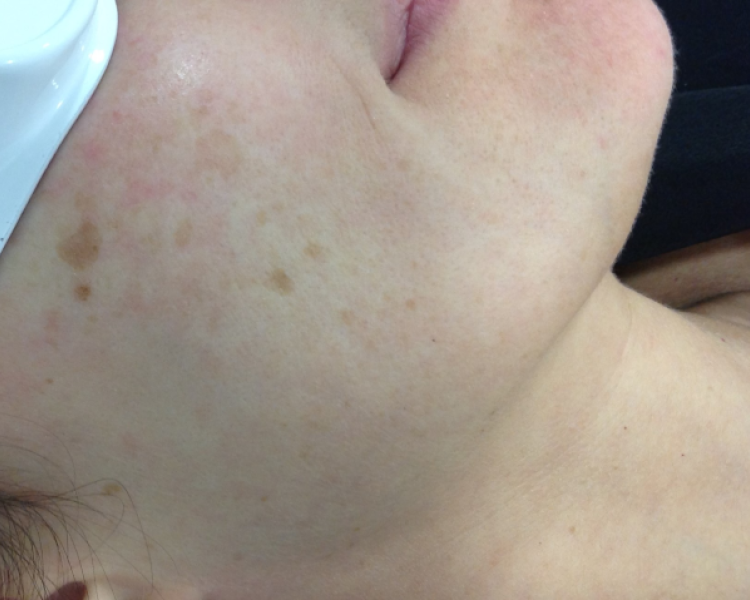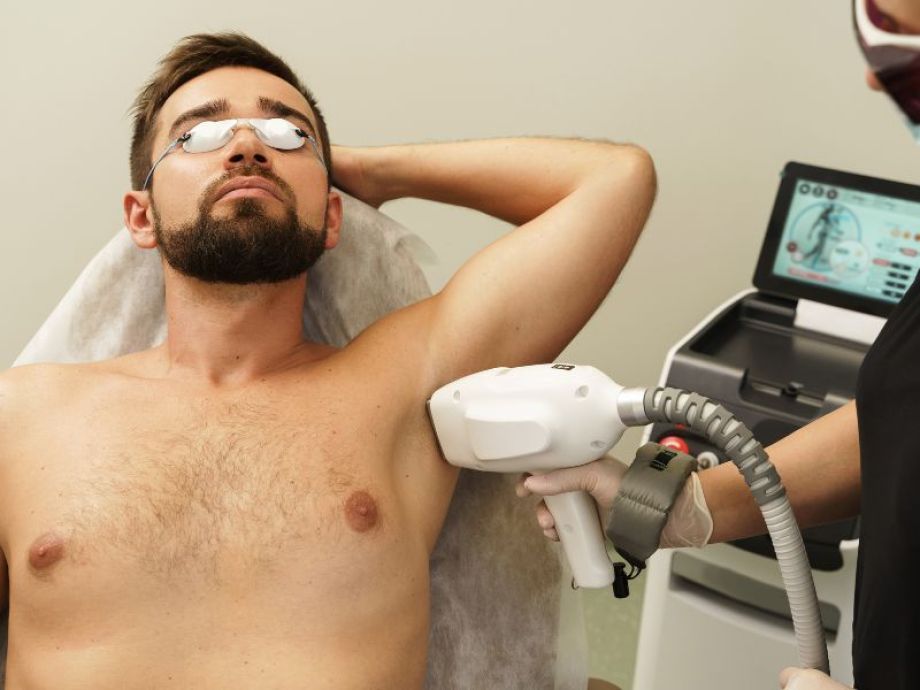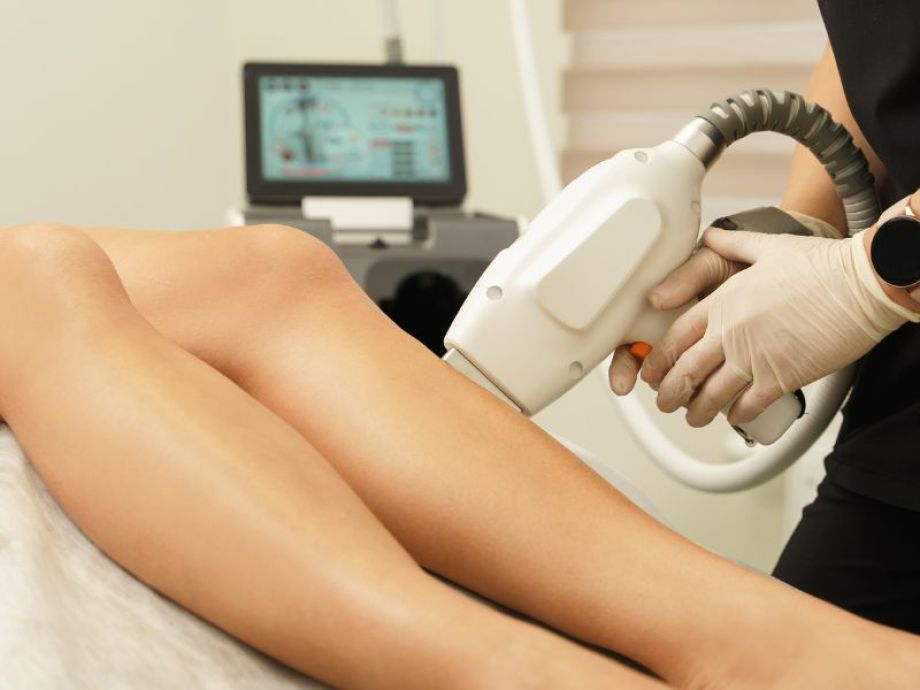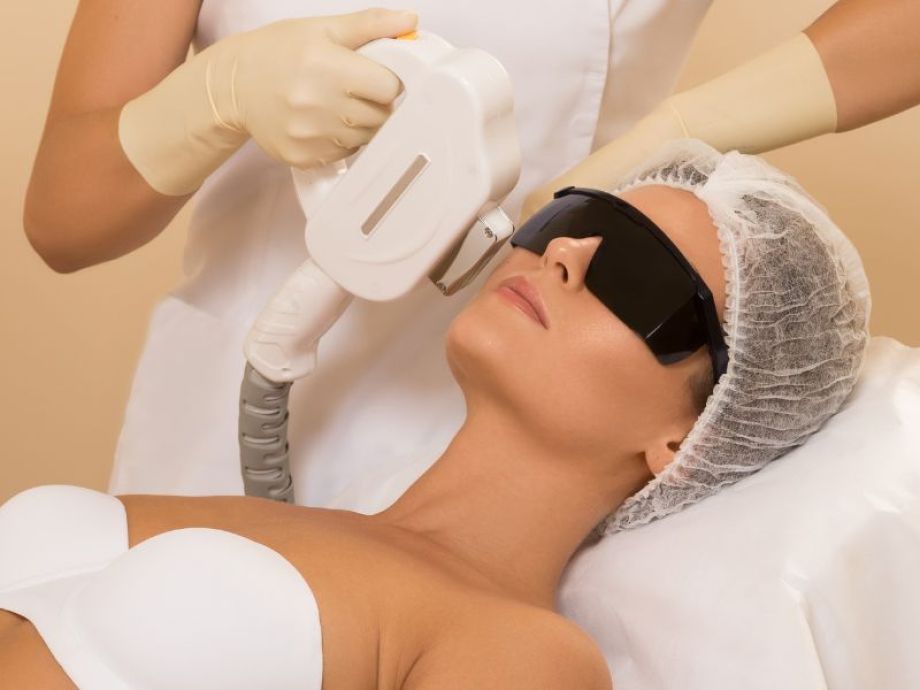
Laser Treatments
Almalaser Harmony XL platform (Maisclinic)
Long Pulse Nd Yag Vascular Laser
It is used in the treatment of both superficial and deeper vascular lesions, as the wavelength of this laser is absorbed by hemoglobin within blood vessels and penetrates deeper into the skin.
The most commonly treated lesions include Telangiectasias ("dilated blood vessels") and Angiomas ("blood spots").
Typically, favorable results are obtained in a small number of sessions, but there may be variability depending on the type and number of vessels to be treated.
Laser Nd Yag QS
Pigmented Lesions
This laser emits very short pulses and is absorbed by melanin, causing fragmentation of the intracellular reservoirs (melanosomes) where melanin resides.
It is mainly used for the treatment of localized benign pigmented lesions. The treatment can be more gentle with a gradual lightening of the lesions, or more aggressive depending on the parameters used.
The most commonly treated lesions are solar lentigines (“sun spots”). A superficial crust typically forms after the treatment, and the use of specific creams or antibiotics is required. Additionally, it is important to avoid sun exposure after the treatment. Therefore, this treatment is not recommended during the summer months.
Avoiding sun exposure is crucial to prevent repigmentation of the treated areas.
Multiple sessions may be needed to achieve the desired result.

Before

After
Laser Nd Yag Pixel Clearlift
Non-invasive Rejuvenation (Face, Neck)
This laser is a non-ablative fractional laser that uses a 5x5 point matrix. It is used to activate collagen regeneration with the aim of rejuvenating the skin and reducing facial and neck sagging.
The most noticeable results are obtained in areas with thinner skin, particularly the eyelids and neck, but it can be used across the entire face.
It is very well tolerated, requiring no anesthesia or restrictions on the patient’s activities. It can be performed at any time of the year since it does not damage the epidermis.
Fractional and Non-Fractional Erbium Laser
Acne Scars, Invasive Rejuvenation, Small Lesions
This laser can emit in both fractional and non-fractional modes.
The term “fractional” means that the laser is emitted in a matrix of points, causing damage to the skin in columns while leaving normal skin between the points. This allows for faster recovery compared to traditional non-fractional lasers.
It can be emitted with a stationary 7x7 tip or a 7x1 roller that slides over the skin. In the latter mode, it delivers more energy per point, allowing for uniform spacing between shots.
It is primarily used for treating acne scars and wrinkles/rejuvenation. The damage caused to the dermis triggers subsequent skin repair with the formation of new collagen, resulting in smoother, more even skin with reduced wrinkles or scars.
This is an aggressive laser, requiring prior application of anesthetic cream and post-treatment use of a skin regenerating or antibiotic cream. Recovery may take several days, and it is crucial to avoid sun exposure after treatment. As a result, it is typically avoided during the summer months.
Luz Pulsada Intensa DYE
Rosacea
The DYE head is a type of intense pulsed light with a very short emission spectrum between 500 and 600 nm, similar to the Pulsed DYE Laser.
It is used for the treatment of vascular lesions and rosacea, as the emission spectrum covers two of the main absorption peaks of hemoglobin.
The treatment can be done in stationary mode, where only one or two high-intensity pulses are applied to each area, or in a moving mode, where multiple passes are made over the same area but with lower fluences.
It includes integrated contact cooling, and a cold ultrasound gel is applied to the skin before treatment to reduce the risk of burns and create an interface between the headpiece and the skin.
Typically, the patient may experience redness for a few days and should avoid sun exposure, but it does not involve significant restrictions on the patient’s activities, although treatment is usually avoided during the summer months.
Several sessions are needed to achieve the desired results, and maintenance sessions may be required periodically.
Photorejuvenation
Face, neck, décolleté, hands
The Intense Pulsed Light (IPL) head emits a wavelength that is absorbed by both melanin and hemoglobin. This allows for the treatment of small pigment spots and minor vascular dilations, making the skin brighter, more even, and reducing fine lines.
It includes integrated contact cooling, and cold ultrasound gel is applied to the skin before treatment to reduce the risk of burns and create an interface between the headpiece and the skin.
Several sessions are required, typically outside the summer period, with sun protection and other associated topical treatments to enhance the results.
SHR Super Hair Removal (Photodepilation)
Photodepilation involves the use of light sources (Laser and Intense Pulsed Light) for the progressive and lasting removal of hair.
To ensure safety, the treatment should be preceded by a prior medical evaluation. This includes assessing the type of hair to be treated and the skin type (skin color), excluding contraindications such as diseases or photosensitizing medications that increase the risk of burns, and addressing any hormonal disorders that may underlie excess hair (with analytical evaluation if necessary), among others.
The results obtained vary based on individual factors such as medical history (including the coexistence of hormonal changes), the area to be treated, the amount and type of hair (color and thickness), the patient’s age, and their individual response to treatment.
Typically, the response is faster if the hair is dark, the skin is light, and the area to be treated is not hormonally dependent.
The number of sessions required is variable, and as the treatment progresses and hair growth decreases, the interval between sessions also increases.
The photodepilation treatment is comfortable, carried out either in stationary mode or in motion, with integrated contact cooling and the application of cold ultrasound gel.
For greater safety and effectiveness, the skin to be treated should not be tanned, and sun exposure should be avoided on the days immediately following treatment.
At Maisclinic, a Photodepilation Program is available, conducted under the evaluation and supervision of a Dermatologist (Dr. Barbara Pereira) and in collaboration with a nurse, ensuring that your photodepilation is carried out with complete safety.







